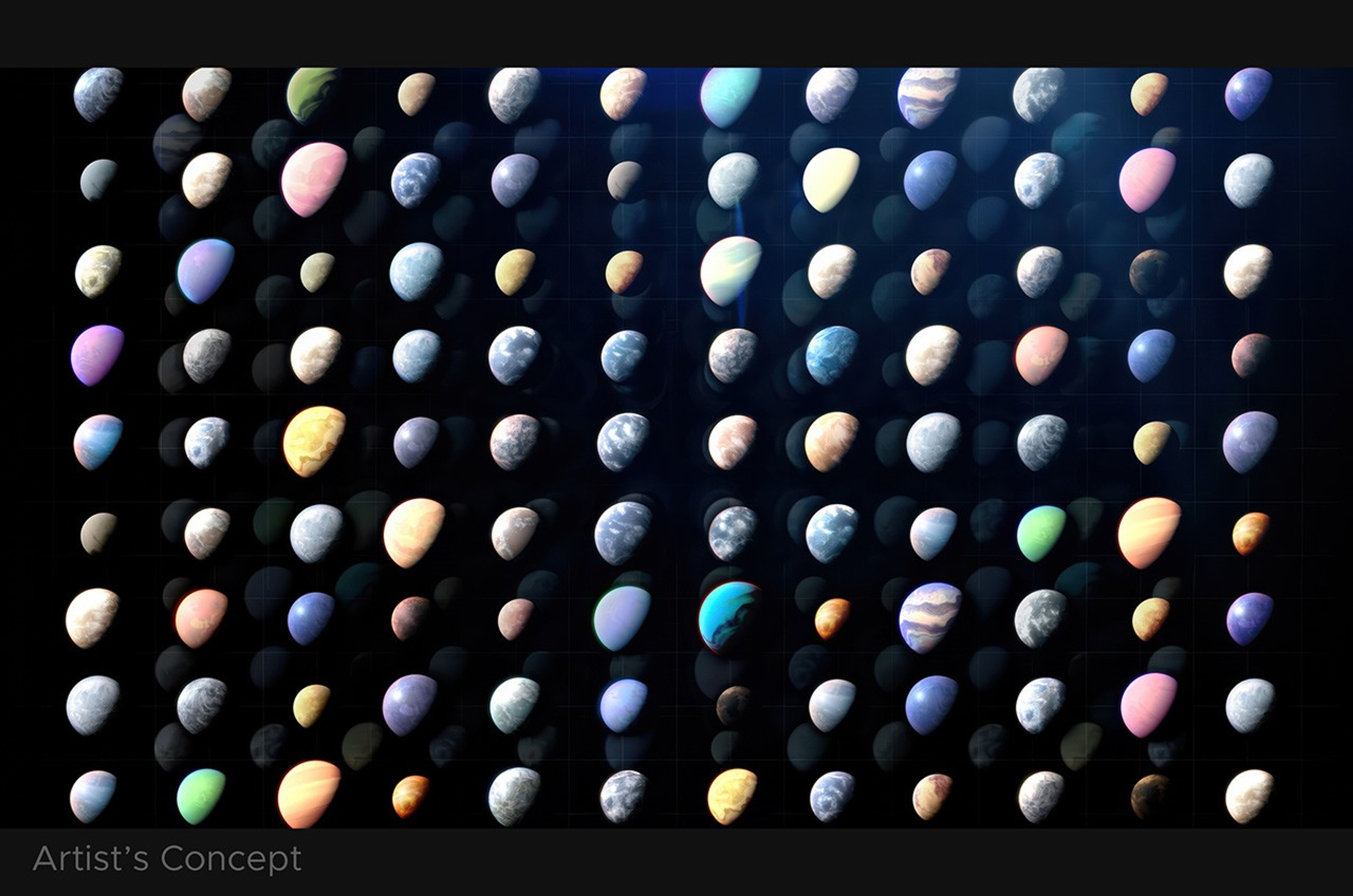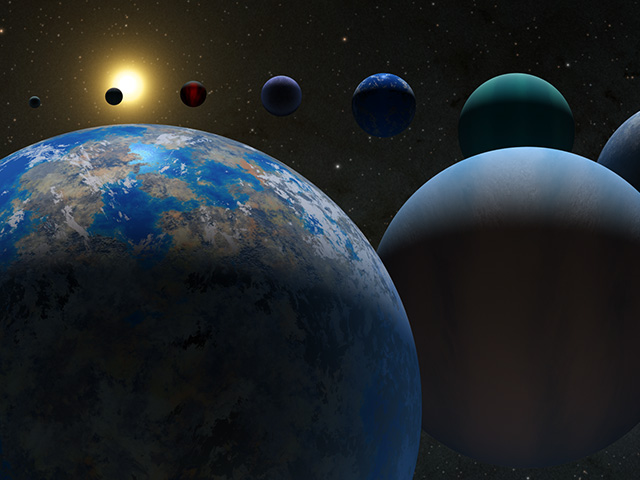The Discovery
Four rocky planets much smaller than Earth orbit Barnard’s Star, the next closest to ours after the three-star Alpha Centauri system. Barnard’s is the nearest single star.
Key Facts
Barnard’s Star, six light-years away, is notorious among astronomers for a history of false planet detections. But with the help of high-precision technology, the latest discovery — a family of four — appears to be solidly confirmed. The tiny size of the planets is also remarkable: Capturing evidence of small worlds at great distance is a tall order, even using state-of-the-art instruments and observational techniques.
Details
Watching for wobbles in the light from a star is one of the leading methods for detecting exoplanets — planets orbiting other stars. This “radial velocity” technique tracks subtle shifts in the spectrum of starlight caused by the gravity of a planet pulling its star back and forth as the planet orbits. But tiny planets pose a major challenge: the smaller the planet, the smaller the pull. These four are each between about a fifth and a third as massive as Earth. Stars also are known to jitter and quake, creating background “noise” that potentially could swamp the comparatively quiet signals from smaller, orbiting worlds.
Astronomers measure the back-and-forth shifting of starlight in meters per second; in this case the radial velocity signals from all four planets amount to faint whispers — from 0.2 to 0.5 meters per second (a person walks at about 1 meter per second). But the noise from stellar activity is nearly 10 times larger at roughly 2 meters per second.
How to separate planet signals from stellar noise? The astronomers made detailed mathematical models of Barnard’s Star’s quakes and jitters, allowing them to recognize and remove those signals from the data collected from the star.
The new paper confirming the four tiny worlds — labeled b, c, d, and e — relies on data from MAROON-X, an “extreme precision” radial velocity instrument attached to the Gemini Telescope on the Maunakea mountaintop in Hawaii. It confirms the detection of the “b” planet, made with previous data from ESPRESSO, a radial velocity instrument attached to the Very Large Telescope in Chile. And the new work reveals three new sibling planets in the same system.
Fun Facts
These planets orbit their red-dwarf star much too closely to be habitable. The closest planet’s “year” lasts a little more than two days; for the farthest planet, it’s is just shy of seven days. That likely makes them too hot to support life. Yet their detection bodes well in the search for life beyond Earth. Scientists say small, rocky planets like ours are probably the best places to look for evidence of life as we know it. But so far they’ve been the most difficult to detect and characterize. High-precision radial velocity measurements, combined with more sharply focused techniques for extracting data, could open new windows into habitable, potentially life-bearing worlds.
Barnard’s star was discovered in 1916 by Edward Emerson Barnard, a pioneering astrophotographer.
The Discoverers
An international team of scientists led by Ritvik Basant of the University of Chicago published their paper on the discovery, “Four Sub-Earth Planets Orbiting Barnard’s Star from MAROON-X and ESPRESSO,” in the science journal, “The Astrophysical Journal Letters,” in March 2025. The planets were entered into the NASA Exoplanet Archive on March 13, 2025.





























